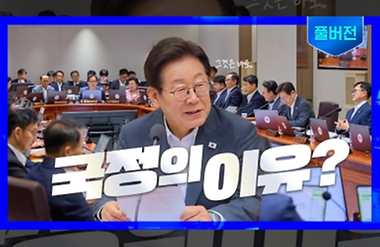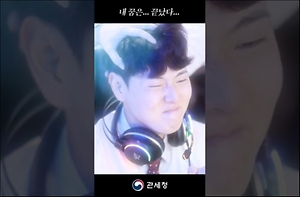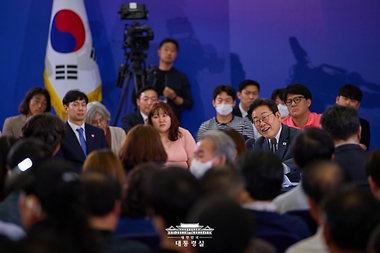콘텐츠 영역
(국영문 동시배포) '불교미술의 진수' 고려 사경과 조선 불화의 귀환
<감지금니 대방광불화엄경 주본 권22>, 보물로 지정된 <감지금니 대방광불화엄경 권15>와 동질의 사경
<시왕도>, 현전하는 조선 전기 시왕도 완질본 2질 중 하나로 국내 첫 사례
국가유산청(청장 최응천)은 국외소재문화유산재단(이사장 김정희, 이하 '국외재단')과 함께 7월 8일 오전 11시 국립고궁박물관(서울 종로구)에서 일본에서 환수한 <감지금니 대방광불화엄경 주본 권22>와 <시왕도>를 언론에 최초로 공개한다.
* <감지금니 대방광불화엄경 주본 권22>: 고려(1334년) 제작 / 감지에 금니 필사 / 세로 36.2cm × 가로 1,088.5cm
* <시왕도>: 조선 전기 제작 / 비단에 채색 / 전체 각 세로 147cm × 가로 66cm, 화면 각 세로 66cm × 가로 44cm
<감지금니 대방광불화엄경 주본 권22>는 감색(紺色) 종이에 금니(金泥)로 필사한 고려 사경(寫經)으로, 지난해 10월 소장자가 국외재단에 매도 의사를 밝히면서 처음 존재가 확인되었다. 이후 국가유산청의 행정지원과 국외재단의 면밀한 조사, 협상을 거쳐 올해 4월 국내로 들여오는 데 성공했다.
* 금니(金泥): 금가루를 아교풀에 개어 만든 안료
* 사경(寫經): 불교 경전을 유포하거나 공덕을 쌓기 위하여 경전을 베끼는 일 또는 베낀 경전
대방광불화엄경은 화엄종의 근본 경전으로, 부처와 중생이 하나라는 것을 기본 사상으로 하고 있다. 원래 고대 인도의 언어인 산스크리트어로 기록되었으며, 한역본(漢譯本)으로는 진본(晉本), 주본(周本), 정원본(貞元本) 등이 있다. 이번에 환수한 유물은 주본(周本) 80권 중 제22권을 옮겨 적은 것으로, 화엄경의 주존불(主尊佛)인 비로자나불(毘盧遮羅佛)이 도솔천궁(兜率天宮)으로 올라가는 과정을 기록하였다.
* 진본(晉本): 동진(東晉) 시대에 불타발타라(佛駄跋陀羅, 359~429)가 한역한 60권본
* 주본(周本): 중국 당나라때 실차난타(實叉難陀, 652~710)가 한역한 80권본
* 정원본(貞元本): 중국 당나라때 반야(般若)가 한역한 40권본
* 비로자나불(毘盧遮羅佛): '화엄경(華嚴經)'의 주불(主佛)로서 불교의 진리 그 자체를 형상화한 광명(光明)의 부처
* 도솔천궁(兜率天宮): 욕계(欲界)에 속한 여섯 하늘 중 넷째 하늘에 있는 궁전
▲ 표지에는 금·은니로 그려진 5송이의 연꽃이 배치되었고, 넝쿨무늬가 연꽃 송이를 감싸고 있다. ▲ 발원문에는 원통 2년(1334년) 정독만달아(鄭禿滿達兒)가 부모님과 황제 등의 은혜에 감사하며 화엄경 81권 등을 사성(寫成)한다는 내용이 적혀 있다. 코리아나화장박물관 소장 <감지금니 대방광불화엄경 권15>(보물)의 발원문과 내용이 일치하여 동질의 화엄경임을 알 수 있다.
▲ 변상도(變相圖)는 5개의 화면(畫面)으로 구성되어 있다. 화면 오른쪽 상단에는 비로자나불(毘盧遮羅佛)을 중심으로 양옆에 여러 보살들을 배치하고, 금강당보살이 회주(會主)가 되어 도솔천궁에서 5번째 설법을 하는 장면이다. 나머지 4개의 화면에는 비로자나불(毘盧遮羅佛)이 보리수 아래, 도리천, 야마천, 도솔천 등을 넘나들며 설법하는 장면이 그려져 있다. 변상도의 정치하고 능숙한 선묘에서 전문 사경승의 높은 수준의 솜씨를 엿볼 수 있다.
* 정독만달아(鄭禿滿達兒)(1290~?): 고려 충렬왕 때 원나라로 가서 관직에 오른 환관
* 사성(寫成): 사경 작업의 완성
* 변상도(變相圖): 경전의 내용이나 그 교의를 알기 쉽게 상징적으로 표현한 그림
* 회주(會主): 모임을 이끌어 가는 사람
* 도리천(忉利天): 욕계(欲界)에 속한 여섯 하늘 중 둘째 하늘
* 야마천(夜摩天): 욕계(欲界)에 속한 여섯 하늘 중 셋째 하늘
* 정치(精緻): 정교하고 치밀함.
* 선묘(線描): 선으로 묘사함.
한편, 이번에 돌아온 <시왕도>는 국외재단이 2023년 8월 일본 경매 출품 정보를 입수한 후, 국가유산청과의 협력을 통해 낙찰에 성공하여 지난해 11월 국내로 환수하였다.
조선 전기를 대표하는 <시왕도>로 일찍부터 학계의 주목을 받은 작품이며, 현전하는 조선 전기 완질 시왕도 2점 중 하나로 그 의미가 남다르다. 일본인 수집가 이리에 다케오(入江毅夫)의 『유현재선한국고서화도록(幽玄齋選韓國古書畵圖錄)』에서 해당 유물이 소개된 바 있다. 각 폭의 화기에는 제작 시기는 없으나, 시주자들의 이름이 적혀 있어 민간 발원으로 조성되었음을 추정할 수 있다.
* 이리에 다케오(入江毅夫): 일본인 화상이자 수장가로, 일본 교토에서 '이조당(李朝堂)'이라는 고미술점을 운영하였으며, 1996년 본인의 소장품 740여 점을 수록한 『유현재선한국고서화도록』을 발간함.
'시왕'은 중후한 체구에 근엄한 표정이 섬세하게 표현되었으며, '옥졸'은 근육질의 우락부락한 신체에 힘껏 체벌을 가하는 형상이 실감나게 묘사되어 있다. 시왕 등 등장인물의 의복과 배경에 그려진 운문, 소국화문, 당초문 등은 고려 불화에서 자주 사용된 문양을 따르고 있다. [붙임 사진 17 참고]
* 시왕(十王): 사후세계에서 인간들의 죄의 경중을 가리는 열 명의 심판관으로, 진광왕(秦廣王), 초강왕(初江王), 송제왕(宋帝王), 오관왕(五官王), 염라왕(閻羅王), 변성왕(變成王), 태산왕(泰山王), 평등왕(平等王), 도시왕(都市王), 오도전륜왕(五道轉輪王)을 말함.
<시왕도>는 저승에서 망자가 생전에 지은 죄를 심판하는 열 명의 시왕을 그린 그림이다. 이번 환수본은 총 10폭으로 구성되어 있으며, 1폭당 1명의 시왕과 지옥 장면이 그려져 있다. 각 폭 상단에는 시왕들의 재판 주관 장면을 크게 부각시킨 한편, 하단에는 옥졸에게 체벌당하는 망자들의 처참한 광경을 비교적 작게 묘사하고 있다. 대부분의 지옥 장면이 고려후기 <시왕도>의 도상과 유사하나, 제5염라왕도와 제6변성왕도는 기존에 알려져 있는 도상과 다른 독특함을 보여준다.
제5염라왕도는 시왕 중 대표적인 지옥왕인 염라왕이 주관하는 지옥을 묘사한 장면이다. 이번 환수본에는 염라왕이 쓴 면류관(冕旒冠)에 북두칠성이 그려져 있는데, 이는 일월문이나 금강경책이 그려진 기존 염라왕도 도상과는 구별되는 점이다. 북두칠성은 민간신앙에서 수명을 관장하는 별로, 염라왕이 중생의 죽음을 관장했던 시왕임을 의미하며 염라왕의 권위를 나타내는 것으로 보여진다. [붙임 사진 18 참고]
* 염라왕(閻羅王): 시왕 중 다섯 번째 왕으로 망자가 생전에 행한 행적들이 모두 비치는 업경이라는 거울을 갖고 죄를 심판
* 면류관(冕旒冠): 직사각형의 판에 많은 구슬을 꿰어 늘어뜨린 관
* 금강경(金剛經): 부처가 깨달은 지혜의 삶에 대하여 설법한 내용을 담은 경전
제6변성왕도는 확탕지옥(鑊湯地獄)의 끓는 물이 극락세계의 연지(蓮池)로 바뀌고 그 속에서 화생(化生)한 모습을 묘사하고 있다. '연화화생(蓮華化生)'이 지옥 장면에 등장한 것은 이번 환수 유물을 통해 처음 발견된 사례이다. 지옥에서도 죗값을 치르고 뉘우치면 연지(蓮池), 즉 '극락(極樂)'에 태어날 수 있다는 희망적인 메시지를 담고 있는 것으로 해석된다. [붙임 사진 19 참고]
* 확탕지옥(鑊湯地獄): 쇳물이 끓는 솥에 삶기는 고통을 받는 지옥
* 연화화생(蓮華化生): 연꽃이 만물을 화생, 다시 탄생시킨다는 불교적 생성관
이번에 공개하는 <감지금니 대방광불화엄경 주본 권22>와 <시왕도>는 수백 년의 시간이 흘렀음에도 보존 상태가 양호해 향후 다양한 연구와 전시 등에 활용될 것으로 기대된다.
최응천 국가유산청장은 "광복 80주년을 한 달여 앞둔 시점에 일본에서 돌아온 우리의 소중한 문화유산을 공개하게 된 것을 뜻깊게 생각한다. 특히 이번에 공개하는 고려사경과 시왕도는 고려와 조선 전기 불교미술의 뛰어남을 보여주는 작품으로, 앞으로 많은 국민들이 보실 수 있도록 하여 그 가치를 나눌 계획이다"라고 밝혔다.
국가유산청과 국외재단은 앞으로도 현지 협력망을 강화하여 우리의 역사와 문화를 되찾기 위한 국외유산의 발굴, 환수와 보존, 활용을 적극적으로 추진할 계획이다. 이번 문화유산 환수는 복권기금의 지원으로 이루어졌다.
On July 8 at 11 A.M. at the National Palace Museum of Korea (located in Jongno-gu, Seoul), the Korea Heritage Service (Administrator: Choi Eung-Chon; hereafter the KHS) will join the Overseas Korean Cultural Heritage Foundation (Chair: Kim Jung-hee; hereafter the OKCHF) in unveiling to the press for the first time the Transcription of the Zhou Version of the Avatamsaka Sutra (The Flower Garland Sutra), Vol. 22 in Gold on Indigo Paper and a set of paintings of the Ten Underworld Kings, both of which have been recently retrieved from Japan.
* Transcription of the Zhou Version of the Avatamsaka Sutra (The Flower Garland Sutra), Vol. 22 in Gold on Indigo Paper: Produced in 1334 (during the Goryeo period) / transcribed in gold on indigo paper / H. 36.2 ×. W. 1,088.5 cm
* The Ten Underworld Kings Painting Set: Produced in the early Joseon period / color on silk / (overall size of each painting) H. 147 × W. 66 cm, (image size of each painting) H. 66 × W. 44 cm
The OKCHF first learned of the existence of the Transcription (sagyeong*) of the Zhou Version of the Avatamsaka Sutra, Vol. 22 in Gold (geumni*) on Indigo Paper, which dates to the Goryeo Dynasty, in October 2024 when its collector notified the OKCHF of an intention to sell it. With administrative support from the KHS and meticulous research on the transcription by the OKCHF, the transcription was successfully retrieved to South Korea last April following the OKCHF's careful negotiations with the collector.
* Geumni (Gold): Pigment made by mixing gold powder with glue.
* Sagyeong (Transcription): This refers to transcribed sutras or the act of transcribing Buddhist sutras in order to distribute them or to accumulate merit.
The fundamental scripture for the Flower Garland School of Buddhism, the Avatamsaka Sutra* centers on the idea that sentient beings are all simultaneously Buddhas. The sutra was originally written in Sanskrit, an ancient language from India. There are three versions in Chinese translation: the Jin version*, the Zhou version*, and the Zhenyuan version*. The retrieved item is a handwritten copy of the contents of Volume 22 among the eighty volumes of the Zhou version of the Avatamsaka Sutra. It records the process of Vairocana Buddha*, the main deity of the Avatamsaka Sutra, ascending to the palace in Tushita Heaven*.
* The Jin version of the Avatamsaka Sutra: Comprising sixty volumes, it was translated into Chinese by Buddhabhadra (359–429) during the Eastern Jin period.
* The Zhou version of the Avatamsaka Sutra: Comprising eighty volumes, it was translated into Chinese by Siksananda (652–710) during the Tang period.
* The Zhenyuan version of the Avatamsaka Sutra: Comprising forty volumes, it was translated into Chinese by Prajna during the Tang period.
* Vairocana Buddha: The main deity for the Avatamsaka Sutra and the Buddha of light who represents the Buddhist truth itself.
* Palace in Tushita Heaven: The palace in the fourth of the six heavens within the world of desire.
The cover of the Transcription of the Zhou Version of the Avatamsaka Sutra, Vol. 22 in Gold on Indigo Paper features five lotus flowers in gold and silver surrounded by scroll designs. This manuscript includes a written prayer noting that Jeongdokmandara* completed the transcription of eighty-one volumes of the Avatamsaka Sutra in 1334 (the second year of the Yuantong era) to thank his parents and the emperor for their kindness. The same content is found in a written prayer in the Transcription of the Avatamsaka Sutra, Vol. 15 in Gold on Indigo Paper (designated a treasure) in the collection of the Coreana Cosmetics Museum. This indicates that both transcriptions are handwritten copies from the same set.
The returned transcription has an illustration (byeonsangdo*) spanning five pages. In the upper-right section of the illustration is a scene of Vairocana Buddha flanked by several Bodhisattvas (including Vajraketu Bodhisattva, who serves as a promoter of a meeting (hoeju)) preaching the fifth sermon in the palace in Tushita Heaven. The rest of the illustration shows scenes of Vairocana Buddha preaching in different locations: under a bodhi tree, in Trayastrimsha Heaven*, in Yama Heaven*, and in Tushita Heaven. The exquisite flowing line drawings in the illustration reflect the skill of a professional monk-transcriber.
* Jeongdokmandara (1290–?): A Goryeo-era Korean who went to Yuan Dynasty China during the reign of King Chungryeol and became a eunuch there.
* Byeonsangdo (literally meaning transformation tableaux): An illustration symbolically explaining the content of a sutra or its meaning to facilitate understanding.
* Trayastrimsha Heaven: The second of the six heavens within the world of desire.
* Yama Heaven: The third of the six heavens within the world of desire.
In the case of the retrieved Ten Underworld Kings painting set, the OKCHF acquired information on its submission to an auction in Japan in August 2023. With cooperation from the KHS, it made a successful bid for the set and was able to retrieve it last November.
This set of paintings depicting the Ten Underworld Kings has long received attention from academia as a notable early-Joseon example of Ten Underworld Kings paintings. It is especially significant as one of the only two known surviving complete sets of Ten Underworld Kings paintings from the early Joseon Dynasty. It was introduced in Illustrated Catalog of Old Korean Calligraphy and Painting from the Yuhyeonjae Collection by the Japanese collector Irie Takeo*. The inscription on each painting in the set bears no production date, but names of donors are included. These names suggest that this set was commissioned by commoners.
* Irie Takeo: A Japanese art dealer and collector who operated an antique art shop called Richōdō in Kyoto, Japan. In 1996, he published Illustrated Catalog of Old Korean Calligraphy and Painting from the Yuhyeonjae Collection that included 740 items from his collection.
The Ten Underworld Kings (siwang*) are shown in this set, all with imposing physiques and stern facial expressions that are meticulously rendered. The muscular jailors are vividly depicted inflicting corporal punishment on the deceased with all their strength. Designs of clouds, small chrysanthemums, and scrolls on the clothing of figures, including the ten kings, and in the backgrounds of this set are also often observed in Buddhist paintings produced during the Goryeo Dynasty (See attached photo 17).
* Siwang (The Ten Underworld Kings): Ten judges in the underworld who determine the gravity of the sins committed by humans. They are King Jingwang, King Chogang, King Songje, King Ogwan, King Yeomna, King Byeonseong, King Taesan, King Pyeongdeung, King Dosi, and King Odojeollyun.
Paintings of the Ten Underworld Kings portray the ten kings in the underworld who pass judgement on the sins that the deceased committed during their lifetimes. The recently retrieved set consists of ten hanging scrolls, each one depicting one of the ten kings and a hell scene. In this set, the upper sections of the paintings highlight scenes of judgment being officiated by the ten kings, while the lower sections illustrate, on a relatively small scale, appalling sights of the deceased being punished by jailors. Moreover, the iconography of most of the hell scenes in this set shares similarities with Ten Underworld Kings paintings from the late Goryeo Dynasty. However, the paintings depicting King Yeomna* (the fifth king) and King Byeonseong (the sixth king) in this set contain distinctive iconography.
The painting of King Yeomna (the fifth king) shows King Yeomna, the best-known among the Ten Underworld Kings, and the hell over which he presides. In this retrieved set, King Yeomna is portrayed wearing a coronet (myeollyugwan*), inside which is an image of the Big Dipper. This inclusion of the Big Dipper differentiates the set from other paintings in which King Yeomna has a design of the sun and moon or the Vajracchedika prajnaparamita Sutra* (The Diamond Sutra) depicted inside his coronet. This iconography of King Yeomna with the Big Dipper, the constellation believed in folk religion to control lifespan, appears to be intended to emphasize his authority as one of the ten kings who oversees the death of sentient beings (See the attached photo 18).
* King Yeomna: The fifth among the Ten Underworld Kings, he judges the souls of the deceased based on their sins using a karma mirror that reflects the deeds they committed during their lifetimes.
* Myeollyugwan (coronet): This type of coronet consists of a rectangular board mounted on a fitted cap with beaded strings dangling from the front and back.
* Vajracchedika prajnaparamita Sutra (The Diamond Sutra): The scripture that conveys the Buddha's preaching on the life of wisdom he attained through enlightenment.
The painting of King Byeonseong (the sixth king) in this set depicts the transformation of the boiling water of Boiling Cauldron Hell (hwaktang jiok*) into a lotus pond, in which the deceased are reborn in lotus flowers (yeonhwa hwasaeng*), within the Pure Land. This is the first known inclusion of beings being born in lotus blossoms within a hell scene. It is interpreted as the conveyance of a hopeful message that even souls already in hell can be reborn in a lotus pond (the Pure Land) if they atone for their sins and sincerely repent (See the attached photo 19).
* Hwaktang jiok (Boiling Cauldron Hell): The hell where sinners are punished by being simmered in a cauldron of boiling molten iron.
* Yeonhwa hwasaeng (Beings born in lotus blossoms): The Buddhist idea of all beings being born mysteriously within lotus blossoms in the Pure Land.
Despite the passage of centuries since their creation, the Transcription of the Zhou Version of the Avatamsaka Sutra, Vol. 22 in Gold on Indigo Paper and the Ten Underworld Kings painting set are preserved in good condition. They are expected to be used for both academic research and exhibition in the future.
Choi Eung-Chon, the Administrator of the KHS, stated that "It is deeply meaningful to unveil this invaluable Korean cultural heritage retrieved from Japan at a time when the eightieth anniversary of Korea's liberation is just a month away. The retrieved transcription and Ten Underworld Kings painting set are embodiments of the splendid Buddhist art from the Goryeo Dynasty and the early Joseon Dynasty, respectively. The KHS will offer regular opportunities for the general public to view them in person and appreciate their significance."
The KHS and the OKCHF will continue to actively seek out, return, conserve, and utilize Korean cultural heritage in other countries by strengthening their local networks overseas as a means to help restore Korea's historical and cultural legacy. The retrieval was undertaken with support from the National Lottery Fund.
<감지금니 대방광불화엄경 주본 권22> 표지
<시왕도> 전체 10폭
“이 자료는 국가유산청의 보도자료를 전재하여 제공함을 알려드립니다.”
- 공공누리 출처표시의 조건에 따라 자유이용이 가능합니다. (텍스트)
- 단, 사진, 이미지, 일러스트, 동영상 등의 일부 자료는 문화체육관광부가 저작권 전부를 보유하고 있지 아니하므로, 반드시 해당 저작권자의 허락을 받으셔야 합니다.
문의처 : 문화체육관광부 정책포털과
| 뉴스 |
|
|---|---|
| 멀티미디어 |
|
| 브리핑룸 |
|
| 정책자료 |
|
| 정부기관 SNS |
|
※ 브리핑룸 보도자료는 각 부·처·기관으로부터 연계로 자동유입되는 자료로 보도자료에 포함된 연락처로 문의
※ 전문자료와 전자책의 이용은 각 자료를 발간한 해당 부처로 문의
이전다음기사
다음기사(국영문 동시배포) 「미술유산 명문의 연구 현황과 활용」 국제학술대회 개최정책브리핑 게시물 운영원칙에 따라 다음과 같은 게시물은 삭제 또는 계정이 차단 될 수 있습니다.
- 1. 타인의 메일주소, 전화번호, 주민등록번호 등의 개인정보 또는 해당 정보를 게재하는 경우
- 2. 확인되지 않은 내용으로 타인의 명예를 훼손시키는 경우
- 3. 공공질서 및 미풍양속에 위반되는 내용을 유포하거나 링크시키는 경우
- 4. 욕설 및 비속어의 사용 및 특정 인종, 성별, 지역 또는 특정한 정치적 견해를 비하하는 용어를 게시하는 경우
- 5. 불법복제, 바이러스, 해킹 등을 조장하는 내용인 경우
- 6. 영리를 목적으로 하는 광고 또는 특정 개인(단체)의 홍보성 글인 경우
- 7. 타인의 저작물(기사, 사진 등 링크)을 무단으로 게시하여 저작권 침해에 해당하는 글
- 8. 범죄와 관련있거나 범죄를 유도하는 행위 및 관련 내용을 게시한 경우
- 9. 공인이나 특정이슈와 관련된 당사자 및 당사자의 주변인, 지인 등을 가장 또는 사칭하여 글을 게시하는 경우
- 10. 해당 기사나 게시글의 내용과 관련없는 특정 의견, 주장, 정보 등을 게시하는 경우
- 11. 동일한 제목, 내용의 글 또는 일부분만 변경해서 글을 반복 게재하는 경우
- 12. 기타 관계법령에 위배된다고 판단되는 경우
- 13. 수사기관 등의 공식적인 요청이 있는 경우
정책 NOW, MY 맞춤뉴스
정책 NOW
인기, 최신, 오늘의 영상 , 오늘의 사진
인기 뉴스
-
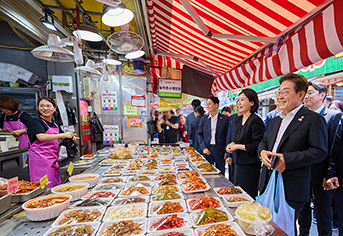 전 국민에 '민생회복 소비쿠폰' 15만 원~45만 원 지급…7월 21일부터
전 국민에 '민생회복 소비쿠폰' 15만 원~45만 원 지급…7월 21일부터
-
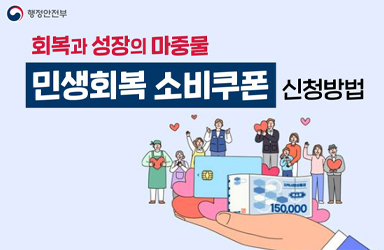 민생회복 소비쿠폰 신청방법
민생회복 소비쿠폰 신청방법
-
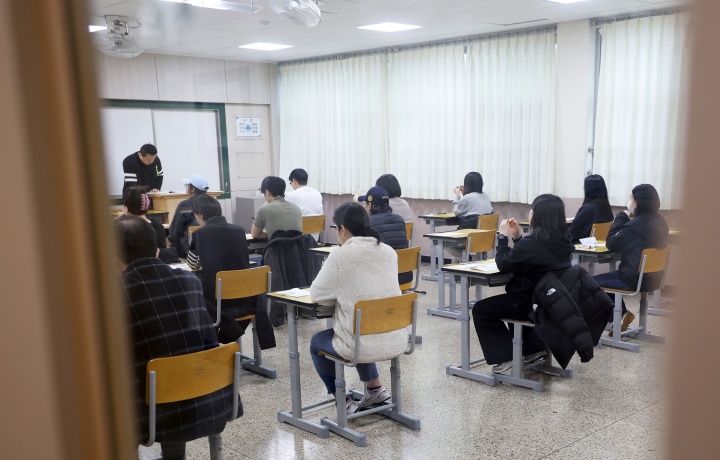 9급 공무원 시험, 2027년부터 과목별 문항 20→25개로 늘린다
9급 공무원 시험, 2027년부터 과목별 문항 20→25개로 늘린다
-
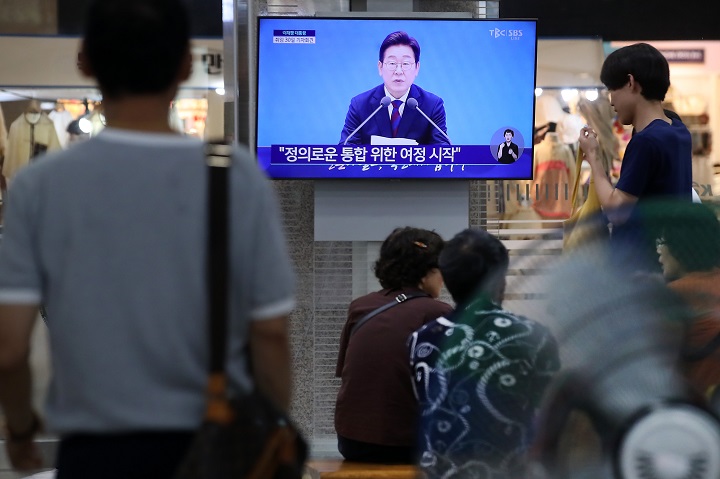 이 대통령 "민생 고통 덜어내고 다시 성장·도약하는 나라 만들 것"
이 대통령 "민생 고통 덜어내고 다시 성장·도약하는 나라 만들 것"
-
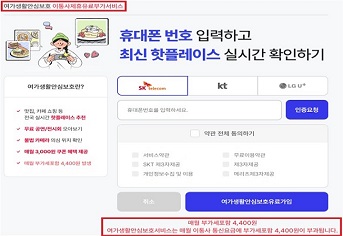 '민생회복지원금 신청' 눌렀다가…사칭 유료서비스 가입 주의
'민생회복지원금 신청' 눌렀다가…사칭 유료서비스 가입 주의
-
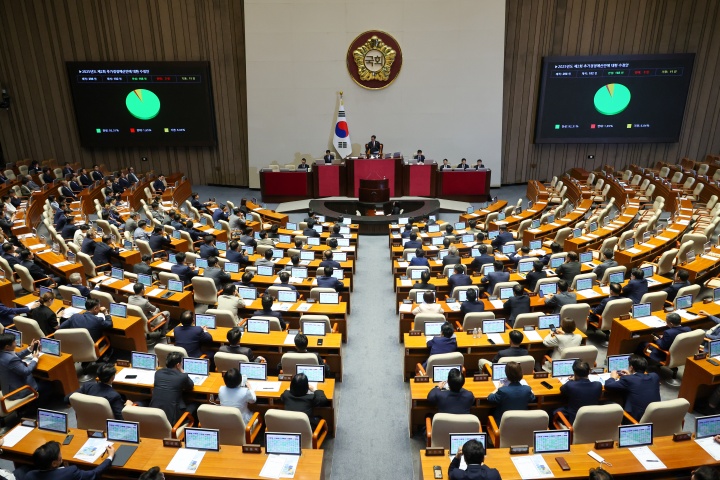 31조 8000억 원 규모 추경 국회 통과…소비쿠폰, 이달 1차 선지급
31조 8000억 원 규모 추경 국회 통과…소비쿠폰, 이달 1차 선지급
-
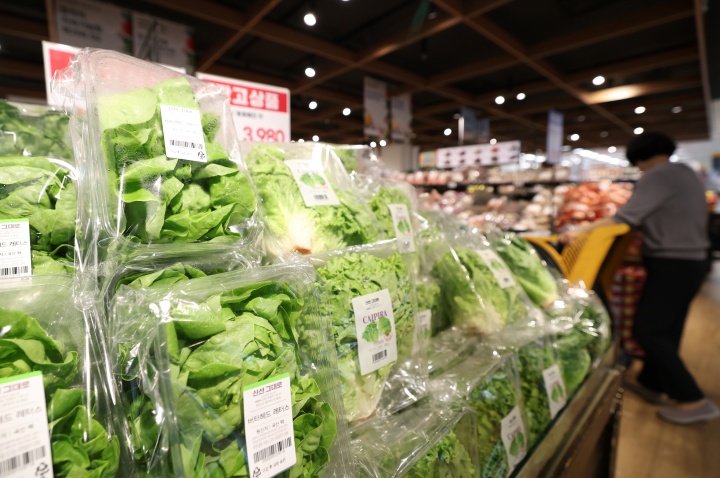 정부, 한우 50% 할인·배추 전량 방출…휴가철 바가지요금 집중 관리
정부, 한우 50% 할인·배추 전량 방출…휴가철 바가지요금 집중 관리
-
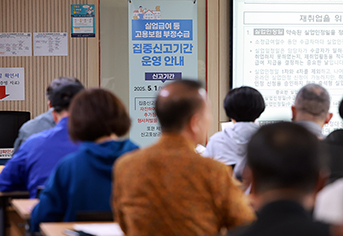 고용보험, '소득' 기반으로 전면 개편…"취약근로자 두텁게 보호"
고용보험, '소득' 기반으로 전면 개편…"취약근로자 두텁게 보호"
-
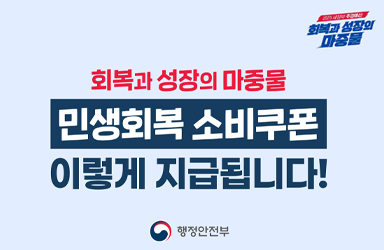 민생회복 소비쿠폰 이렇게 지급됩니다!
민생회복 소비쿠폰 이렇게 지급됩니다!
-
 정부, 부산 화재 아동 사망 관련 긴급대책회의…"취약점 철저 점검"
정부, 부산 화재 아동 사망 관련 긴급대책회의…"취약점 철저 점검"
최신 뉴스
- 국토부 "항공 수요와 지역 발전효과 등 고려해 공항 개발사업 추진"
- 공정위 "인력·조직 확충 방안, 확정된 바 없어"
-
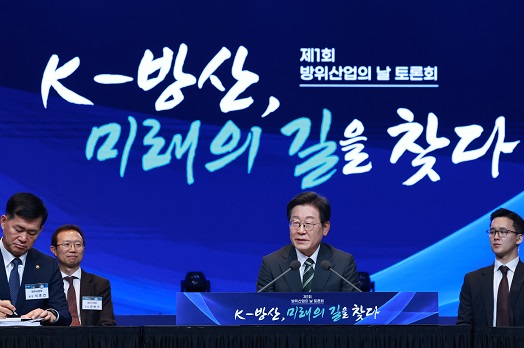 이 대통령 "방위산업, 미래 먹거리…AI·무인 로봇 무기 체계 개발"
이 대통령 "방위산업, 미래 먹거리…AI·무인 로봇 무기 체계 개발"
- 방위산업의 날 토론회 관련 강유정 대변인 브리핑
- '남해 지족해협 죽방렴어업', 세계중요농업유산 등재
-
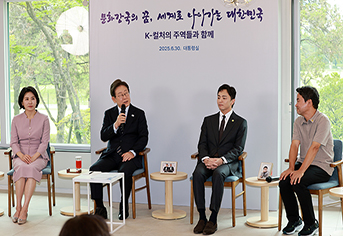 문체부, 신인 창작자 '단막극' 제작 지원 올해 2배 확대
문체부, 신인 창작자 '단막극' 제작 지원 올해 2배 확대
-
영상
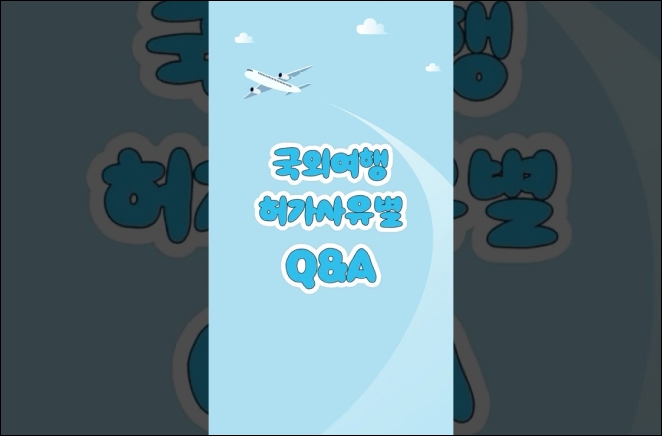 단디가 알려주는 국외여행허가 Q&A
단디가 알려주는 국외여행허가 Q&A
- 방위산업 종사자의 헌신에 감사드립니다.
-
 김민석 총리 "첫 30일 간 국정 파악·업무시스템 정비로 대통령 보좌"
김민석 총리 "첫 30일 간 국정 파악·업무시스템 정비로 대통령 보좌"
-
영상
 무선 이어폰 뭘 살지 고민이라고?
무선 이어폰 뭘 살지 고민이라고?
 이 누리집은 대한민국 공식 전자정부 누리집입니다.
이 누리집은 대한민국 공식 전자정부 누리집입니다.





